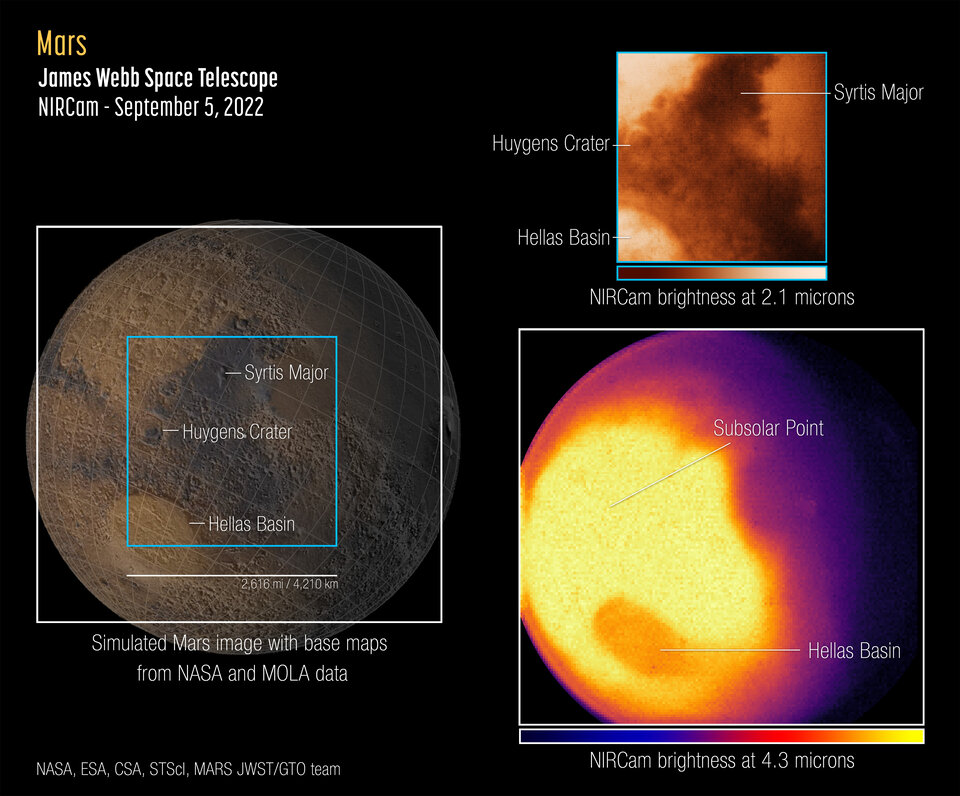
James Webb Space Telescope tagged posts


NASA’s James Webb Space Telescope captured its first images and spectra of Mars Sept. 5. The telescope, an international collaboration with ESA (European Space Agency) and CSA (Canadian Space Agency), provides a unique perspective with its infrared sensitivity on our neighboring planet, complementing data being collected by orbiters, rovers, and other telescopes.
Webb’s unique observation post nearly a million miles away at the sun-Earth Lagrange point 2 (L2) provides a view of Mars’s observable disk (the portion of the sunlit side that is facing the telescope)...
Read More
Credits: NASA, ESA, CSA, STScI
NASA’s James Webb Space Telescope has peered into the chaos of the Cartwheel Galaxy, revealing new details about star formation and the galaxy’s central black hole. Webb’s powerful infrared gaze produced a detailed image of the Cartwheel and two smaller companion galaxies against a backdrop of many other galaxies. The image provides a new view of how the Cartwheel Galaxy has changed over billions of years.
The Cartwheel Galaxy, located about 500 million light-years away in the Sculptor constellation, is a rare sight...
Read More
When stars like our sun die, all that remains is an exposed core—a white dwarf. A planet orbiting a white dwarf presents a promising opportunity to determine if life can survive the death of its star, according to Cornell University researchers.
In a study published in the Astrophysical Journal Letters, they show how NASA’s upcoming James Webb Space Telescope could find signatures of life on Earth-like planets orbiting white dwarfs.
A planet orbiting a small star produces strong atmospheric signals when it passes in front, or “tran...
Read More






Recent Comments